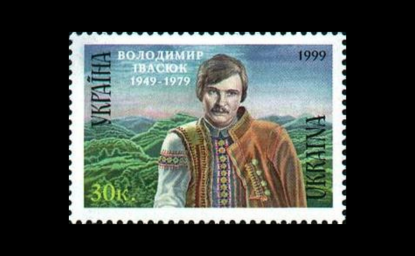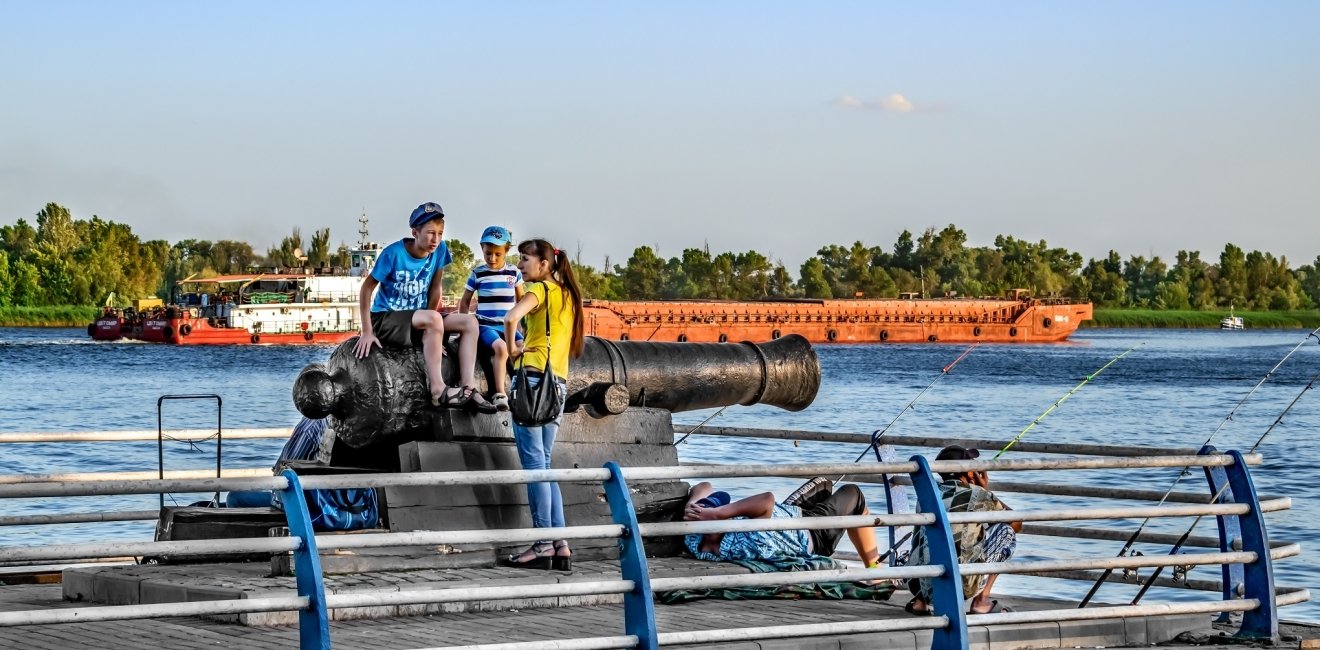
A blog of the Kennan Institute
BY SOPHIE LAMBROSCHINI
In my previous blog post I analyzed how Ukrainian companies responsible for critical infrastructure such as water and electricity have adapted to wartime conditions. The coordinated action that makes public services function despite the shelling of infrastructure networks and the danger to repair crews is a form of resistance.
Thinking further, I realized it also shows how collective management of critical infrastructure allows people to identify with their hometown as a Ukrainian political entity despite the Russian military presence, and how such collective work can express the feeling that citizens and local powers in occupied or besieged communities still have authority over the political. In this way, the relationship of people to material infrastructure may be changing how we understand sovereignty.
Russian tanks entered the southern Ukrainian town of Kherson on March 2. The city of 290,000 lies above the delta of the Dnipro River and on the transit road to Russian-controlled Crimea. The roads in and out of the city are being patrolled by Russian troops. They control most of communications. The local television tower now broadcasts Russian channels, and Ukrainian programming is dubbed into Russian.
The Russian forces also installed a “Salvation Committee for Peace and Order” in the regional administration building that claims political authority over the city which does not include the current mayor of Kherson, Ihor Kolykhaev. His offices in the townhall lie a few hundred meters away.
Residents are allowed to go about their mundane tasks as long as they don’t express opposition or resistance. Anti-Russian demonstrations on Kherson’s central square have been dispersed with warning shots and tear gas. Some urban life goes on, despite daily shelling. Some cafés and shops open sporadically though shortages of cash, medication and sometimes food are common. Municipal services function.
Does this Russian presence mean that Kherson passed into Russian control, as media reports claim? The mayor of Kherson, Ihor Kolykhaev, says no, Kherson is Ukrainian. Although Ukrainian elected authorities have lost territorial, communications, and economic prerogatives in the face of Russian advances, Kolykhaev claims in his social media posts that Kherson remains Ukrainian. The city is occupied but resisting, he says, and devotes his communications with local residents to a minute account of how communal services are provided and repaired in the name of Ukraine and in allegiance to Ukraine. At the end of every post, Kolykhaev signs off with a Ukrainian flag.
The mayor’s social media posts list the accomplishments of municipal services: the number of water lines repaired, garbage collection, the number of gas networks in operation. He notes the efforts of his deputy in organizing repairs to a broken water main. He also applauds the resilience of the most underpaid workers, those who are largely invisible in most circumstances. “In the morning, public utilities workers went into the city to collect garbage. They do it by hand so far, and I thank every contractor and every employee: THANK YOU for not leaving your hometown!”
At the same time, Kolykhaev underlines the fulfillment of essential needs for the city’s residents as a collective effort that includes paying utility bills, despite the war. On March 16 Kolykhaev asked that residents pay for their utilities. “We are a city that succeeded in keeping power, water, gas, garbage collection. If you stop paying, the city will stop.”
This projection of municipal service as a patriotic stance is repeated elsewhere in Ukraine. In the southern city of Mykolayiv, another strategic target for Russia’s thrust to control the Azov and Black Sea coasts, shelling and battles have become increasingly intense, disrupting normal life.
On March 9, in a pledge of support on its Facebook page, the local water supplier Mykolayiv Vodokanal acknowledged the pervasive uncertainty and tied Ukrainian identification to the mundane. “Unfortunately, each of us has already lost peace and confidence in the future.... In these times the employees of Mykolayiv Vodokanal will never allow the citizens to be deprived of the opportunity to cook, wash or water flowers.” The post adds that “we are with you in peace and in war … we are resisting and believe in victory.” The company interprets the actions of everyday life as an expression of dignity and belonging to a place.
But the dynamics intertwining material infrastructure and citizens go further. By March 17, Mykolaiv was almost completely encircled by Russian troops. Last weekend residents were piling tires into makeshift barricades to hold up their advance. The regional governor, Vitaliy Kim, fêted as a local hero for his resistance over the past weeks, had to resort to evacuating thousands of residents in the face of imminent danger. However, these same Mykolaiv residents who were encouraged to flee, were also, at the same time, being reminded of their consumer obligations. “Urgent! Pay your community service bills for February,” an announcement reminded consumers.
In July 2019 I witnessed a similar moment in Avdiyivka, a town of 35,000 located in Donetsk oblast on the line of contact between separatist- and Kyiv government-controlled territories. Some outlying streets of Avdiyivka have experienced shelling throughout the war years of 2014–2022. Trapped in the gray zone between the advance positions of the two adversaries, these districts were practically abandoned by all but a few elderly people.
Despite the danger and the scarcity of consumers, the local water supplier, Voda Donbasu, was still sending out its water meter measurers to those depopulated neighborhoods. A bit bewildered that meter readings should take place in a war zone, I asked a company representative why they continued to do it. "It's a matter of money and of principle," he answered. "How would it look if we stopped collecting revenue? It would be letting people down, as if everything's lost" [1]. The meter measurers—all women—stood behind him and nodded emphatically.
These two examples show that the sequence of production-distribution-payment for critical services such as water and electricity can constitute lifelines of urban society. But how much do the consumers of public services actively contribute to this sequence? The financial history of Voda Donbasu’s accounts show that over six years of war (2014-2019), households in the zone of conflict overwhelmingly continued to pay for their water. Prewar collection rates stood at 94 percent in 2013. The collection rate dropped to 73 percent in 2014–2015 during the most active phase of war before increasing to 80 percent. Under Ukrainian law, it is not possible to cut off water supply for nonpayment. In other words, four out of five households paid for water voluntarily despite the wartime crisis. Payment is also an act of legitimation of the social contract binding municipal authorities, providers, and consumers. If this cycle is interrupted, social organization tethers.
In other words, payment is a form of social engagement in the polis. The anthropologist Nikhil Anand, who studied the social significance of water supply in Mumbai, India, in his 2017 book Hydraulic City describes this dynamic as “hydraulic citizenship” [2]. The continuous efforts to control, maintain, and manage the system create social bonds of civic belonging, he writes. In Mumbai, this “citizenship” is granted to those fortunate enough to receive the municipal service of clean water. It is a dynamic of exclusion or inclusion according to residents’ ability to access water in Mumbai’s socially fractured society. What if in wartime Ukraine, there is another dynamic resembling hydraulic citizenship—“infrastructure citizenship”—at work?
In Ukraine’s case the sequence of production-consumption-payment for critical services is a sign of civic identification in the face of military destruction. Municipal authorities, providers, and consumers in towns besieged or occupied by Russian forces have reframed prewar understandings of belonging and power. Before the war, sovereignty was a matter of political authority and border control.
Since the war started in earnest, collective control from below over critical public services is a clue that in times of conflictual and shifting territorial authority, sovereignty can be perceived differently. Sovereignty becomes the result of voluntary cooperation and engagement binding citizen consumers, technician providers, and political organizers of critical infrastructure services. It shifts the usual definition of sovereignty as a supreme authority of power to a more fluid concept whereby being Ukrainian is not defined only by who controls the streets.
The case of infrastructure management feeds into the scholarly debates around the deterritorialization and de-etatization of sovereignty through the fragmentation of state power between state and nonstate actors [3]. In the case of war and occupation, sovereignty appears to be determined by the collective capability of organizing and satisfying essential human needs in the community in the name of political allegiance to Ukraine.
Notes:
1. Interview by author, Avdiyivka, July 2019.
2. Anand, Nikhil. Hydraulic City. Duke University Press. 2017.
3. Fisun, Oleksandr, and Nataliya Vinnykova. “De-etatization of State Sovereignty and the Formation of a Global Maidan.” Ideology and Politics Journal 17, no. 1 (2021): 72–86. https://doi.org/10.36169/2227-6068.2021.01.00004. And more broadly on the transformation of sovereignty in the post-Soviet space see the issue of Ideology and Politics Journal 17, no. 1 (2021).
The opinions expressed in this article are those solely of the authors and do not reflect the views of the Kennan Institute.
Author


Kennan Institute
After more than 50 years as a vital part of the Wilson Center legacy, the Kennan Institute has become an independent think tank. You can find the current website for the Kennan Institute at kennaninstitute.org. Please look for future announcements about partnership activities between the Wilson Center and the Kennan Institute at Wilson Center Press Room. The Kennan Institute is the premier US center for advanced research on Eurasia and the oldest and largest regional program at the Woodrow Wilson International Center for Scholars. The Kennan Institute is committed to improving American understanding of Russia, Ukraine, Central Asia, the South Caucasus, and the surrounding region through research and exchange. Read more

Explore More in Focus Ukraine
Browse Focus Ukraine
Talking to the Dead to Heal the Living

Ukrainian Issue in Polish Elections


